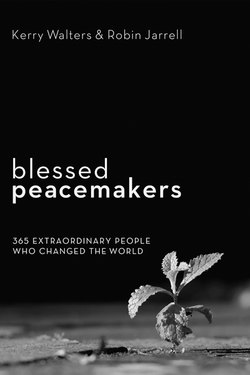Читать книгу Blessed Peacemakers - Robin Jarrell - Страница 7
На сайте Литреса книга снята с продажи.
3 January Takashi Nagai
Оглавление3 January 1908—1 May 1951
The Saint of Urakami
When the atomic bomb exploded over Nagasaki, Takashi Nagai, a radiologist, was on duty at the city’s medical college hospital. Although badly injured in the blast, he pitched in with the rest of the medical staff to treat the hundreds of wounded that began trickling into the hospital. It was only a day later that he was able to make his way to the suburb of Urakami where he lived with his wife, Midori, and their children.
The children had been sent to the mountains for safekeeping two days before the explosion. But Midori, and the house she and Nagai shared, were gone. He was able to recognize the carbonized remains of his wife only by the rosary clutched in the powdered bones of her right hand. Stricken with grief, Nagai prayed: “Jesus, you carried the heavy Cross until you were crucified upon it. Now You come to shed a light of peace on the mystery of suffering and death, Midori’s and mine.”
Nagai had come to Christianity as an adult. The son and grandson of physicians who practiced Shinto, Nagai went through a period of atheism during his medical training. He converted in his mid-twenties when his future wife, Midori, a devout Roman Catholic, slipped a catechism into a care package that she sent to him during his mandatory period of military service.
A month after the destruction of Nagasaki, Nagai was stricken by radiation sickness. Already diagnosed in the spring of that year with leukemia caused by his medical work with X-rays, Nagai remained near death for a month. But to the surprise of everyone he recovered. During his convalescence, he built a small hut from the rubble of his Urakami house where he lived for two years with his children, mother-in-law, and two other relatives. Eventually he built a smaller one for himself as a hermitage in which he spent hours in prayer and contemplation. He named the hut Nyoko do, “As Yourself House,” from Jesus’ command to “Love your neighbor as yourself.”
It was in Nyoko do that Nagai began writing poems and books that commemorated the victims of Nagasaki, connected their suffering to the suffering of Christ, and praised the spirit of loving forgiveness. With chilling poetic finality he describes the incineration of young Christian schoolgirls “like lilies white” who died “burning red” chanting psalms. One of his poems, inspired by the death of Christian schoolgirls as they participated in morning prayer, is a stark reminder of the more than eight thousand Japanese Christians who perished in the blast. It was written as he lay dying of leukemia.
